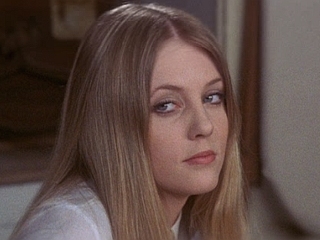AFED #135: Kaidan chibusa enoki [Ghost of Chibusa Enoki, aka The Mother Tree] (Japan, 1958); Dir. Gorô Kadono
Although Japanese supernatural horror might nowadays lead one to think of stories about cursed videotapes and spectral emo girls who can't keep their hair out of their faces, these are only recent manifestations of a tradition that's several hundred years old.
Japanese ghost stories, or kaidan, first emerged during the Edo period in the seventeenth century, adapted and inspired by earlier Chinese ghost stories. Typically they revolve around vengeful spirits who return to redress a wrong committed against them in their mortal lives, or sometimes with a general grudge against humanity.
Kaidan have inspired two of Japanese cinema's most celebrated films - Kobayashi's Kwaidan and Mizoguchi's Ugetsu - but there are numerous other lesser works that draw upon this heritage. During the fifties the Shintoho, a short-lived studio founded by former employees of the more famous Toho Co, produced a series of modest kaidan films, one of which was The Mother Tree...
This compact (just 6o minutes), economical feature is the story of Chibusa Enoki, a successful painter who takes on a scheming samurai as his apprentice. When Chibusa goes away to fulfill a long-standing commission the samurai seizes the opportunity to rape the painter's devoted wife before murdering her maid. Upon the painter's return the samurai forces Chibusa's servant into helping lure the unsuspecting artist into a trap and murders kills them both, casting Chibusa's body into a pond.
However, the dead man left his last painting unfinished, which appears to be a pretext to return and exact some righteous justice. After making an appearance before his wife and instructing her to deliver their newborn child to the safety of the 'mother tree' the baleful Chibusa sets about achieving his retribution against the villain.
Although by all accounts a fairly typical example of the genre, to less accustomed western eyes it's an engrossing tale which delivers the requisite chills. The camerawork and editing are more conventional than I anticipated (none of the long, pensive shots of Ozu or Mizoguchi here) but within its budgetary limitations there's a building sense of foreboding before the eventual payoff.
Japanese ghost stories, or kaidan, first emerged during the Edo period in the seventeenth century, adapted and inspired by earlier Chinese ghost stories. Typically they revolve around vengeful spirits who return to redress a wrong committed against them in their mortal lives, or sometimes with a general grudge against humanity.
Kaidan have inspired two of Japanese cinema's most celebrated films - Kobayashi's Kwaidan and Mizoguchi's Ugetsu - but there are numerous other lesser works that draw upon this heritage. During the fifties the Shintoho, a short-lived studio founded by former employees of the more famous Toho Co, produced a series of modest kaidan films, one of which was The Mother Tree...
This compact (just 6o minutes), economical feature is the story of Chibusa Enoki, a successful painter who takes on a scheming samurai as his apprentice. When Chibusa goes away to fulfill a long-standing commission the samurai seizes the opportunity to rape the painter's devoted wife before murdering her maid. Upon the painter's return the samurai forces Chibusa's servant into helping lure the unsuspecting artist into a trap and murders kills them both, casting Chibusa's body into a pond.
However, the dead man left his last painting unfinished, which appears to be a pretext to return and exact some righteous justice. After making an appearance before his wife and instructing her to deliver their newborn child to the safety of the 'mother tree' the baleful Chibusa sets about achieving his retribution against the villain.
Although by all accounts a fairly typical example of the genre, to less accustomed western eyes it's an engrossing tale which delivers the requisite chills. The camerawork and editing are more conventional than I anticipated (none of the long, pensive shots of Ozu or Mizoguchi here) but within its budgetary limitations there's a building sense of foreboding before the eventual payoff.




Ok, so you took a break. Throw away the rule book, my friend, but give us some more movie reviews. I for one find your stuff really interesting (and I learn a few things too). Get back in the saddle, and fear not that you only post occasionally. Never mind the width, feel the quality (to misquote).
ReplyDeleteThis comment has been removed by the author.
ReplyDelete